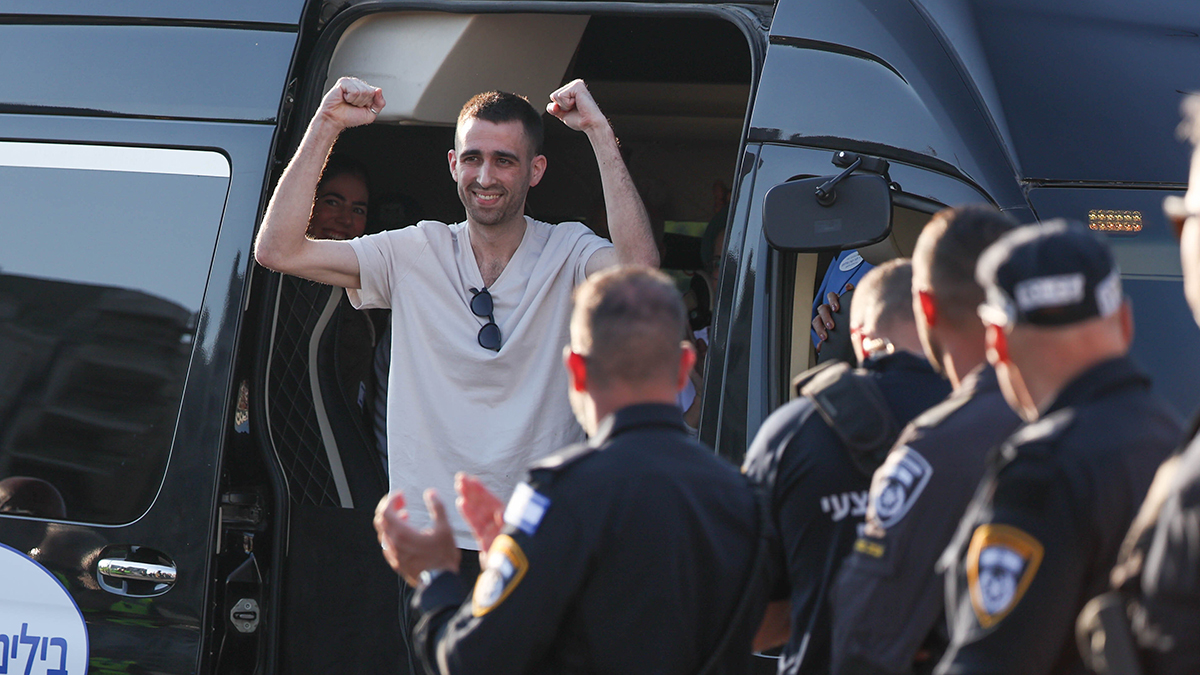As Israeli hostages are freed and Palestinian prisoners and detainees released — and after President Donald Trump‘s lengthy address to Israel’s parliament on Monday — focus is shifting to what comes next.
Some of the longest applause for Trump’s speech came when he said that virtually the whole region had endorsed a plan for Gaza to be demilitarized and Hamas to disarm — key elements of his 20-point plan that have yet to actually be agreed upon.
Now that phase one of his plan is being executed, negotiators and neighboring countries will watch whether key points of Trump’s proposal will be accepted by both Israel and Hamas in talks on the next phases.
Last few days
A ceasefire came into effect in Gaza on Friday at noon local time, (5 a.m. ET), after the first phase of Trump’s plan was agreed by Israel and Hamas, bringing relative calm to the enclave for the first time in months since the last truce collapsed in March.
Under the first phase of Trump’s plan, 20 living hostages were handed over to Israel on Monday.The remains of a further 28 hostages held by Hamas were expected to be released within 72 hours, although only four were initially, much to the disappointment of families.
Israel also pledged to release 250 convicted prisoners and 1,700 Palestinians detained since Oct. 7. Over 150 of the freed prisoners were deported to Egypt.
More aid has begun to flow into the enclave in recent days, although it falls far short of what aid workers say is necessary.
Now what?
Hamas has long asserted that it would not release the last of the hostages until Israeli groups leave Gaza entirely, but having agreed to the first phase of Trump’s plan, the militant group is relying on guarantees from Trump that a full withdrawal will eventually happen.
When and if Israel withdraws fully remains unclear.
Meanwhile, it is also unclear whether Hamas, which has ruled Gaza since 2007, will agree to a key stipulation of Trump’s overall plan, as well as a crucial demand from Israel — that it disarm.
Hamas has long refused calls to lay down arms, saying it has a right to armed resistance until Israel ends its occupation of Palestinian territories — and that has been a key sticking point in talks to negotiate an end to Israel’s offensive in Gaza.
In an interview with Al Jazeera on Oct. 9, senior Hamas official Osama Hamdan said that no Palestinian would accept surrendering weapons and that the people of Gaza were in greater need than ever of resistance.
The militant group has agreed to step down from leadership over the territory and relinquish governance to a transitional body of Palestinian technocrats, which would be overseen by an international body, dubbed the “Board of Peace.” This body is expected to be headed by Trump, with former British Prime Minister Tony Blair also named as a possible member of the oversight body.
Noting the plan aboard the Air Force One on Monday en route to Israel, Trump said he first wanted to find out whether “Tony would be popular with all.”
“I like Tony, I’ve always liked Tony, but I want to find out that he’s an acceptable choice to everybody,” he added.
The idea of Blair joining the board has already drawn early criticism, with his reputation in the region shadowed by his decision to back the U.S.-led 2003 invasion of Iraq — and claims by the U.S. and Britain of Iraq having weapons of mass destruction found to be false.
Trump optimistic
Speaking aboard Air Force One on his way to Israel on Monday, Trump said he believed “everybody is happy” with his 20-point peace plan.
Noting that much of Gaza now resembles a “demolition site” after more than two years of Israel’s offensive in the enclave, Trump said cleanup efforts would begin “pretty much immediately.”
During his address to the Knesset, Trump also said Israel has won all it can by force.
“Now, it is time to translate these victories against terrorists on the battlefield into the ultimate prize of peace and prosperity for the entire Middle East,” he said.
In Gaza, Palestinians across the enclave balanced their hopes for peace against fears that the ceasefire won’t hold, as many return to the areas where their homes once stood.
“Everything is gone; no necessities of life remain,” one man told NBC News.
“So, why do you live for? Our money, our homes that we worked hard for years — it’s all gone,” he said. “Nothing is left.”
The Associated Press contributed.

Want more insights? Join Working Title - our career elevating newsletter and get the future of work delivered weekly.


